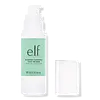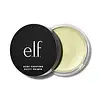What's inside
What's inside
 Key Ingredients
Key Ingredients

 Benefits
Benefits

 Concerns
Concerns

 Ingredients Side-by-side
Ingredients Side-by-side

Salicylic Acid 2%
MaskingWater
Skin ConditioningHydrogenated Polyisobutene
EmollientDimethicone
EmollientButylene Glycol
HumectantPropylene Glycol
HumectantEthoxydiglycol
HumectantGlyceryl Stearate
EmollientPEG-100 Stearate
Magnesium Aluminum Silicate
AbsorbentCetearyl Alcohol
EmollientTriethanolamine
BufferingPolyacrylamide
C13-14 Isoparaffin
EmollientLaureth-7
EmulsifyingStearic Acid
CleansingVp/Hexadecene Copolymer
Tocopheryl Acetate
AntioxidantXanthan Gum
EmulsifyingSilica
AbrasiveDisodium EDTA
Panthenol
Skin ConditioningRosmarinus Officinalis Extract
AntimicrobialThymus Vulgaris Leaf Extract
Skin ProtectingCamellia Sinensis Leaf Extract
AntimicrobialCitrus Limon Fruit Extract
MaskingPhenoxyethanol
PreservativeCaprylyl Glycol
EmollientSalicylic Acid 2%, Water, Hydrogenated Polyisobutene, Dimethicone, Butylene Glycol, Propylene Glycol, Ethoxydiglycol, Glyceryl Stearate, PEG-100 Stearate, Magnesium Aluminum Silicate, Cetearyl Alcohol, Triethanolamine, Polyacrylamide, C13-14 Isoparaffin, Laureth-7, Stearic Acid, Vp/Hexadecene Copolymer, Tocopheryl Acetate, Xanthan Gum, Silica, Disodium EDTA, Panthenol, Rosmarinus Officinalis Extract, Thymus Vulgaris Leaf Extract, Camellia Sinensis Leaf Extract, Citrus Limon Fruit Extract, Phenoxyethanol, Caprylyl Glycol
Salicylic Acid 1.8%
MaskingWater
Skin ConditioningDimethicone
EmollientPropylene Glycol
HumectantGlycerin
HumectantCeresin
Emulsion StabilisingParaffin
PerfumingHydrogenated Polyisobutene
EmollientHdi/Trimethylol Hexyllactone Crosspolymer
Trimethylsiloxysilicate
EmollientPolymethylsilsesquioxane
Tromethamine
BufferingLauryl PEG-10 Tris(Trimethylsiloxy)Silylethyl Dimethicone
EmulsifyingSodium Chloride
MaskingDimethicone/PEG-10/15 Crosspolymer
Dimethicone Crosspolymer
Emulsion StabilisingZinc PCA
HumectantKaolin
AbrasiveSilica
AbrasiveOryza Sativa Bran Wax
Skin ConditioningTriethoxycaprylylsilane
Disodium EDTA
Ethylhexylglycerin
Skin ConditioningCaprylyl Glycol
EmollientPhenoxyethanol
PreservativeCI 77891
Cosmetic ColorantCI 77288
Cosmetic ColorantCI 77492
Cosmetic ColorantSalicylic Acid 1.8%, Water, Dimethicone, Propylene Glycol, Glycerin, Ceresin, Paraffin, Hydrogenated Polyisobutene, Hdi/Trimethylol Hexyllactone Crosspolymer, Trimethylsiloxysilicate, Polymethylsilsesquioxane, Tromethamine, Lauryl PEG-10 Tris(Trimethylsiloxy)Silylethyl Dimethicone, Sodium Chloride, Dimethicone/PEG-10/15 Crosspolymer, Dimethicone Crosspolymer, Zinc PCA, Kaolin, Silica, Oryza Sativa Bran Wax, Triethoxycaprylylsilane, Disodium EDTA, Ethylhexylglycerin, Caprylyl Glycol, Phenoxyethanol, CI 77891, CI 77288, CI 77492
 Reviews
Reviews

Ingredients Explained
These ingredients are found in both products.
Ingredients higher up in an ingredient list are typically present in a larger amount.
Caprylyl Glycol is a humectant and emollient, meaning it attracts and preserves moisture.
It is a common ingredient in many products, especially those designed to hydrate skin. The primary benefits are retaining moisture, skin softening, and promoting a healthy skin barrier.
Though Caprylyl Glycol is an alcohol derived from fatty acids, it is not the kind that can dry out skin.
This ingredient is also used as a preservative to extend the life of products. It has slight antimicrobial properties.
Learn more about Caprylyl GlycolDimethicone is a type of synthetic silicone created from natural materials such as quartz.
What it does:
Dimethicone comes in different viscosities:
Depending on the viscosity, dimethicone has different properties.
Ingredients lists don't always show which type is used, so we recommend reaching out to the brand if you have questions about the viscosity.
This ingredient is unlikely to cause irritation because it does not get absorbed into skin. However, people with silicone allergies should be careful about using this ingredient.
Note: Dimethicone may contribute to pilling. This is because it is not oil or water soluble, so pilling may occur when layered with products. When mixed with heavy oils in a formula, the outcome is also quite greasy.
Learn more about DimethiconeDisodium EDTA plays a role in making products more stable by aiding other preservatives.
It is a chelating agent, meaning it neutralizes metal ions that may be found in a product.
Disodium EDTA is a salt of edetic acid and is found to be safe in cosmetic ingredients.
Learn more about Disodium EDTAHydrogenated Polyisobutene is a synthetic polymer. Polymers are compounds with high molecular weight. Hydrogenated Polyisobutene is an emollient and texture enhancer.
In one study, Hydrogenated Polyisobutene showed better skin hydration levels than Caprylic/Capric Triglyceride. As an emollient, it helps keep your skin soft and hydrated by trapping moisture in.
Hydrogenated Polyisobutene is often used as a mineral oil replacement.
Learn more about Hydrogenated PolyisobutenePhenoxyethanol is a preservative that has germicide, antimicrobial, and aromatic properties. Studies show that phenoxyethanol can prevent microbial growth. By itself, it has a scent that is similar to that of a rose.
It's often used in formulations along with Caprylyl Glycol to preserve the shelf life of products.
Propylene Glycol is an odorless, colorless liquid. As a humectant, it helps skin retain moisture. It also aids in delivering active ingredients.
Another role of this ingredient is preventing a product from melting or freezing. Propylene glycol also adds antimicrobrial properties to a product, elongating product lifespan.
This ingredient is considered an organic alcohol and commonly added into both cosmetics and foods.
Those with sensitive skin or conditions may develop a rash when using this ingredient.
Learn more about Propylene GlycolSalicylic Acid (also known as beta hydroxy acid or BHA) is a well-known ingredient for treating skin that struggles with acne and clogged pores. It exfoliates both the skin's surface and deep within the pores to help clear out buildup, control oil, and reduce inflammation.
Unlike AHAs (alpha hydroxy acids), salicylic acid is oil-soluble. This allows it to penetrate into pores which makes it especially effective for treating blackheads and preventing future breakouts.
Salicylic acid is also known for its soothing properties. It has a similar structure to aspirin and can calm inflamed or irritated skin, making it a good option for acne-prone skin that is also sensitive.
Concentrations of 0.5-2% are recognized by the U.S. FDA as an over-the-counter topical acne product.
It can cause irritation and/or dryness if one's skin already has a compromised moisture barrier, so it's best to focus on repairing that before introducing this ingredient into your routine.
While salicylic acid does not increase sun sensitivity, it’s still important to wear sunscreen daily to protect your skin.
If you are looking for the ingredient called BHA or Butylated Hydroxyanisole, click here.
Learn more about Salicylic AcidSilica, also known as silicon dioxide, is a naturally occurring mineral. It is used as a fine, spherical, and porous powder in cosmetics.
Though it has exfoliant properties, the function of silica varies depending on the product.
The unique structure of silica enhances the spreadability and adds smoothness, making it a great texture enhancer.
It is also used as an active carrier, emulsifier, and mattifier due to its ability to absorb excess oil.
In some products, tiny microneedles called spicules are made from silica or hydrolyzed sponge. When you rub them in, they lightly polish away dead skin layers and enhance the penetration of active ingredients.
Learn more about SilicaWater. It's the most common cosmetic ingredient of all. You'll usually see it at the top of ingredient lists, meaning that it makes up the largest part of the product.
So why is it so popular? Water most often acts as a solvent - this means that it helps dissolve other ingredients into the formulation.
You'll also recognize water as that liquid we all need to stay alive. If you see this, drink a glass of water. Stay hydrated!
Learn more about Water